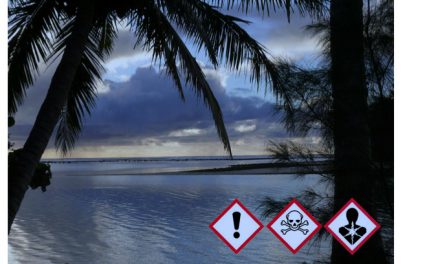Polybrominated diphenylethers (PBDEs) are used as flame retardants by the electronics industry and in a wide range of products including computers, white goods, car interiors, carpets and carpet underlay, polyurethane foams in furniture and bedding.
PBDEs have been shown to disrupt thyroid hormones, mimic oestrogen and are linked with cancer and reproductive damage. PBDEs are found in umbilical cord blood, breast milk, breast fat, as well as adult blood and fat. Studies have found the highest levels in children under 4-year-old.
PBDEs have also been detected in house dust at very high levels up to 25,000ppb due to the off gassing of treated products and furnishings. ‘Wipe samples’ from computers contained PBDEs in all sample.
In 2007, the Australian government released studies on PBDEs in Australian air and dust, the aquatic environment and blood.
PBDEs were detected in:
- all samples of indoor and outdoor air. Indoor air had a range of 0.5 -179 pg/m3 for homes and 15 – 487 pg/m3 for offices.
- all dust samples with a concentration ranged from 87 – 3070 ng/g dust.
- 9 out of 10 surfaces sampled. The surfaces sampled represented televisions, refrigerators, stereos and DVD players.
- sediment samples from 35 of 46 sites and with concentration ranging from non-detect to 60,900 pg.g-1 dry weight.
- human blood with the highest levels being found in young children. The report acknowledges that Australians have twice the level of PBDEs in their blood (6.7 – 18 ng g-1 lipid) as their European counterparts with the highest concentrations in children under four.
A 2005 study of Australian breastmilk had shown similar high levels of PBDE contamination. PBDEs have also been found throughout the environment and wildlife including birds, mammals, fish and marsupials.
DecaBDE was found in ‘relatively high level in the marsupials, Tasmanian Devils.
PBDEs have been sold in the following three commercial mixtures:
DecaBDE – primarily composed of decaBDE with trace amounts of nonaBDE congeners
OctaBDE – primarily composed of hexaBDE, heptaBDE, and octaBDE congeners
PentaBDE – primarily composed of tetraBDE, pentaBDE, and hexaBDE congeners
DecaBDE is the most commonly used flame retardant in electronic products. Deca-BDE has recently been shown to have the potential to break down in the environment and in animals to the smaller, more toxic penta-BDE that is more bioaccumulative in the environment.
Both PentaBDE and OctaBDE have been assessed by the Stockholm Convention’s Persistent Organic Pollutants Review Committee and found to be POPs. For more information visit International POPs Elimination Network (IPEN)


